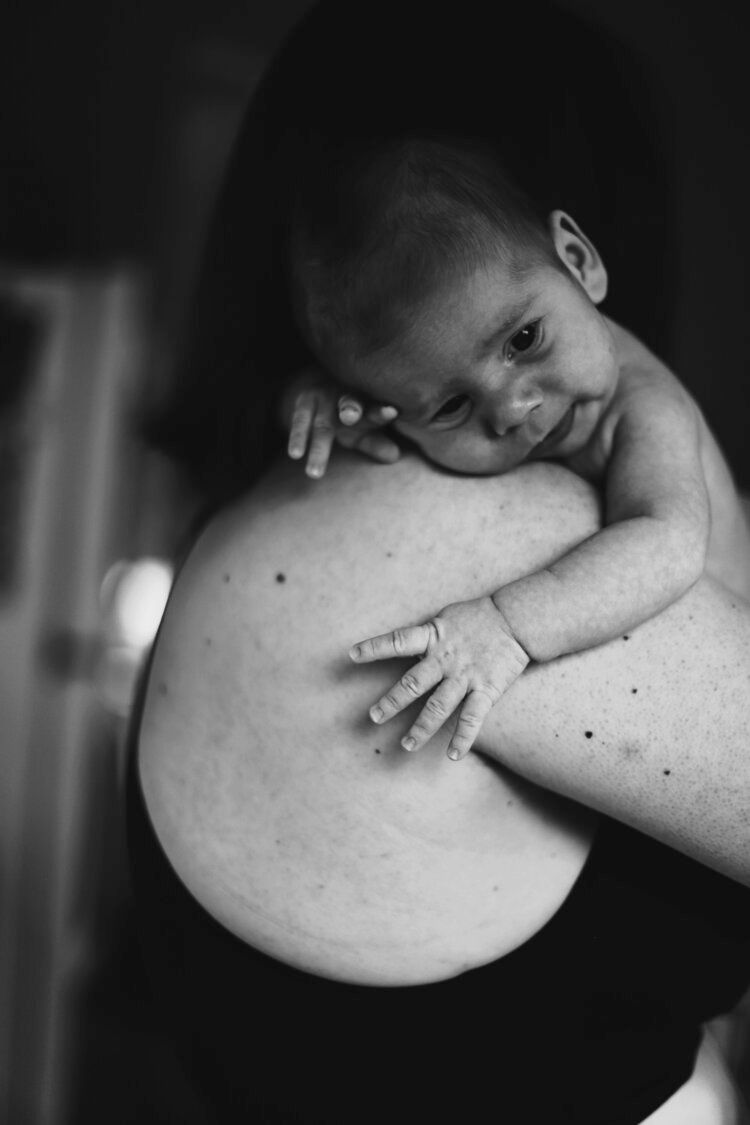Humans & Kangaroos Have More in Common Than You Think
- Ponnie Matin Pelchat

- Oct 15, 2020
- 4 min read
Updated: Jan 20
Guest Blog by Allie Mennie of North Shore Doula
The first thing that comes to our mind when we think of kangaroos is that big pouch their babies/joeys hang out in. But did you know baby kangaroos actually get way more out of that pouch than just a place to sleep? Have you ever seen a newborn kangaroo? Most people haven’t because when newborn kangaroos are born, they’re roughly the size of a jelly bean and they do this epic crawl up their mother to her pouch and latch on to her teat and spend the next few months nursing and growing inside her pouch. Once the joey eventually makes its way out of its mother’s pouch and into the world, it will still go back often and won’t be fully independent for about another year.

Marsupials are non-placental mammals, so they can only grow so much in utero without a placenta and then need to be born and begin nursing soon after to get nutrients and pick up where the uterus left off. Humans have placentas and our babies are born with eyes and more senses than baby kangaroos, but our milk composition is quite similar. Why would our milk be so similar to that of a kangaroo? Let’s dive into how mammals are divided into separate classes and consider which class humans might fit in to. The four classes of mammals are: cache mammals (rabbits, deer, seals, etc) hide their babies in a safe place and leave for long stretches of time to forage and come back and feed their babies. The milk of these animals is incredibly high in fat and protein to last those long stretches of time.
nest mammals (dogs, cats, etc…) are often born in litters and need the warmth of their siblings and nest in the early days. The mothers of these animals return to the nest about every 2 hours and their milk is not as high in protein and fat as cache mammals.
follow mammals (cows, giraffes, etc...) are born quite mature and can walk well enough to follow their mothers and stay close to their mothers and feed frequently throughout the day and night. Their milk is lower in fat and protein than cache or nest mammals because they feed more often.
carry mammals (kangaroos and other marsupials, apes, etc…) are the most immature at birth and are carried constantly by the mother for an extended period of time and are fed low protein and low fat milk frequently around the clock.
Where do you think we fit in? Do we leave our babies in a safe place for long, long stretches (sometimes days at a time?) while we forage to food before coming back to nurse? No, our babies can’t go more than a couple to a few hours without being fed, so we’re not classified under cache mammals. Our babies aren’t born in litters either and don’t needthe warmth of siblings to regulate temperature in the early days. Our babies also aren’t born able to walk and follow us around to feed frequently throughout the day. Instead, we have to carry them to allow them to nurse frequently. That’s right! We’re classified as carry mammals. There are quite a few studies on why we should carry our babies and the importance of touch in human development (I’ll link some of them below the article if you’d like to do some further reading) and they all show the immense importance of carrying our babies and the wonders it does for both mom and baby. Specifically for baby, we see stabilization of baby's heart rate, better breathing, less crying, and faster weight gain. In mothers, we see improved bonding, increased milk supply and better breastfeeding rates, as well as increased confidence in caring for their baby which can lower postpartum mood and anxiety disorders. Kangaroo care extends into baby wearing as well, so make sure you feel comfortable wearing your baby and don’t be shy to reach out for help. One of our local community partners is Ponnie Matin Pelchat who is a baby wearing educator and does both in person and virtual consults so wherever you’re located, you’ll have reassurance that you’re wearing baby properly. Our babies’ development relies on being held and carried and nursed frequently. We’re carry mammals and it’s literally impossible to spoil your baby by holding them too often. So enjoy those newborn snuggles, keep calm, and carry your baby.

Further Reading:
Human Milk for the Premature Infant | The Importance of Touch in Development | The calming effect of maternal carrying | Kangaroo Care Compared to Incubators in Maintaining Body Warmth in Preterm Infants | Epigenetic correlates of neonatal contact in humans
About the author
Born in Southern California, Allie studied Health Information Sciences/Public Health at UVic and was drawn toward preventative medicine. When the job of a doula was explained to her, she realized that doula work was the most immediate gratification form of preventative medicine and made such a massive difference in cesarean rates, interventions, and postpartum mood and anxiety disorders.
Her goal is to empower women to have positive birth experiences.



Comments